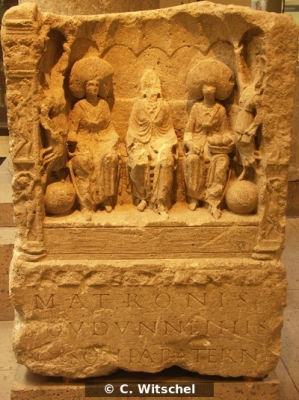1986 - 2021

Since 2022, the EDH has been accessible via Heidelberg University. There it can be accessed via the specialist information service for Classical Studies Propylaeum (external link).
The task of the Heidelberg Epigraphic Database (EDH) is to systematically record ancient Latin and bilingual (mostly Latin-Greek) inscriptions in a complex database. Due to its interdisciplinary concept and working methods, it is one of the leading international database projects for the rapid collection and reliable historical evaluation of epigraphic evidence. The special features of the EDH are its regional systematics (external link), the fact that the stored meta-information can be combined at will and the reciprocal linking of the Epigraphic Text Database (external link) with the three other sub-databases of the EDH, the Epigraphic Bibliography (external link), the Epigraphic Photo Library (external link) and the Epigraphic Geography Database (external link).
Its aim is to make the epigraphic documentation of the provinces of the Roman Empire available for online research as completely and reliably as possible by 2020 (the end of the project). Following the decision of the Commissione epigrafia e informatica of the AIEGL (external link) in 2003 to establish the international epigraphic database federation EAGLE (Electronic Archives of Greek and Latin Epigraphy), the EDH has since been responsible for the inscriptions of the Roman provinces, while the inscriptions of Italy already recorded by the EDH have been transferred to the Epigraphic Database Rome (EDR) (external link) for further processing and completion of the database. The purpose of the EAGLE federation is to make all Latin and Greek inscriptions of antiquity accessible on the Internet according to standardized criteria. The EDR was founded for this purpose in close cooperation with the EDH and based on its model.
The project was successfully completed at the end of 2021 with the completion of the desired database.

